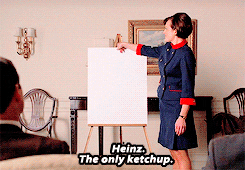The Nexd Perspective: Gyroscope ads engage your audience
This month, we’ve been looking at the effect ad-blocking is having on ad campaigns and at different strategies advertisers can use to combat the rise in the use of ad-blockers. Today we turn our attention to the use of interactive ads, in particular, gyroscope ads.
What are gyroscope ads? How could they help advertisers to re-engage their audiences? We’ll explain all that and more, including how gyroscope advertising could help to stem the tide of ad-blocking.
Just what exactly are gyroscope ads?
If you’ve engaged with an interactive ad before, it may well have been an ad that included some kind of device motion functionality, otherwise known as a gyroscope ad. Gyroscope ads utilize gyroscope technology to track a user’s movement of their phone. Think about when you tilt your phone to the side; the objects on the screen adjust accordingly. This device motion event is tracked and when presented with a gyroscope advert, users are therefore encouraged to move their phone in order to interact with the advert. The movement could be in the form of a shake, a move to the left, right, up or down.
Why gyroscope ads for advertisers?

We all know the difficulties advertisers face these days. The era of the Mad Men on Madison Avenue is long over and advertisers need to stand out from the crowd if they want their ad to be noticed. Interactive ads are a brilliant solution for advertisers who want to grab their users’ attention as they automatically prompt a response from the user. In fact, a study by Magna Global showed a 47% lift in time spent with an interactive ad compared to a non-interactive one.
Gyroscope ads, or ads enabled with device motion functionality allow for even more interactivity as they also track device motion events. For advertisers looking to run ad campaigns that result in higher engagement rates, gyroscope ads really are a no brainer.
Why gyroscope ads for users?
It’s a well-known fact that users are increasingly becoming fed up with advertising. In fact, 27% of the US population will have installed an ad-blocker by the end of 2021. Why are users turning to ad-blockers? Most people agree it’s due to the low quality ads presented to them.
As Julia Dear of Haymarket Publishing argues, it is up to brands to reverse digital marketing disengagement and only then will clients “be rewarded with deeper engagement and higher ROI, and consumers will enjoy the advertising as part of their interaction with the brand.”
At Nexd, we completely agree, and it’s for this reason we are always looking for new ways for our clients to be more creative and entertaining in their ad campaigns. We believe that gyroscope ads are a great way to reduce disenchantment and increase engagement with advertising.
Gyroscope ads in practice
Take, for example, a producer of spirits whose products are added to mixers to make cocktails. They want to run a brand awareness campaign to engage their audiences across different mobile devices. Whilst their focus is on brand awareness, the marketing team still wants to justify their ad spend to their senior management team and show ROI. They therefore decide to settle on a KPI of engagement. Knowing that interactive ads produce higher rates of engagement, they choose to build creatives that include some form of interactivity. The next question: what type of interactive ad would tie in best with the story they’re trying to tell?
Looking for a format that helps them to tell their brand story, they settle on a “shake” gyroscope ad. The highly-interactive ad allows the user to select the drink they want to make, choose their appropriate mixer and spirit and then shake their phone to create the perfect cocktail. In a world where ad-blockers are on the rise and user engagement continues to slump, the spirits producer has created a win-win situation: they’ve managed to create awareness of their products, and their target audience is both engaged and entertained.
Or imagine a travel agency who wants to create awareness of their international holidays. They could use a gyroscope ad which encourages the user to make an upwards movement with their phone, reflecting the movement of a plane taking off. Again, the brand manages to be creative with their ad format and produce an engaging ad that reflects their brand story.
Some players in the industry are moving away from gyroscope ads. However, we at Nexd still fully believe in their value. We have a number of different gyroscope or device motion-enabled ads available for advertisers to try in their next ad campaigns – from our “blinds” layout, consisting of three images that can be cycled through by tilting the device from side to side, to our “panorama”, our “Floating Object” layout where a floating image responds to device movements, to our “VR Showroom” layout, that invokes a VR feel. Pivoting the device moves the viewport around a fully VR showroom.
Our user-friendly Campaign Manager makes it easy to create highly-engaging ads, without the need to write a single line of code. Check out all the possibilities in our demo gallery.
The Bottom Line
If you haven’t yet tried gyroscope ads, make sure you consider them for your next ad campaign. They offer even more possibilities for interactivity, meaning higher engagement rates, and also allow advertisers to tell their brand story in unique, entertaining formats. In a world in which users are relying more and more heavily on ad-blockers, gyroscope ads are a powerful tool for advertisers to re-engage their audiences.
Note: Apple has disabled gyroscope access for Safari. In this case, creatives will have swipe interaction. All ads work with gyro in Android, other browsers and apps. Learn more here.